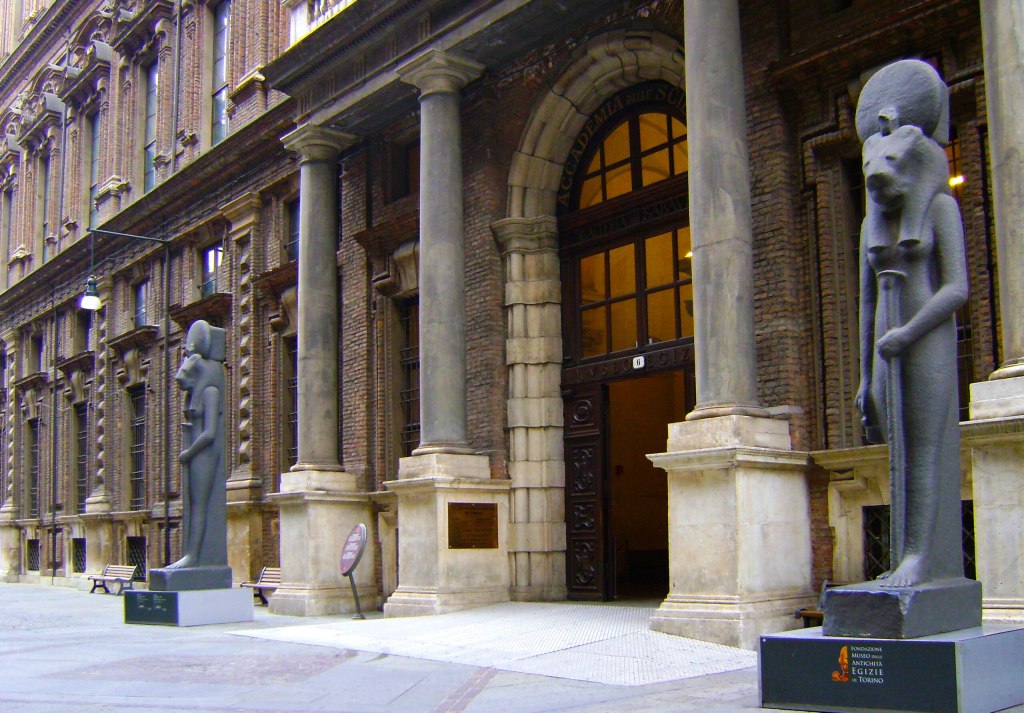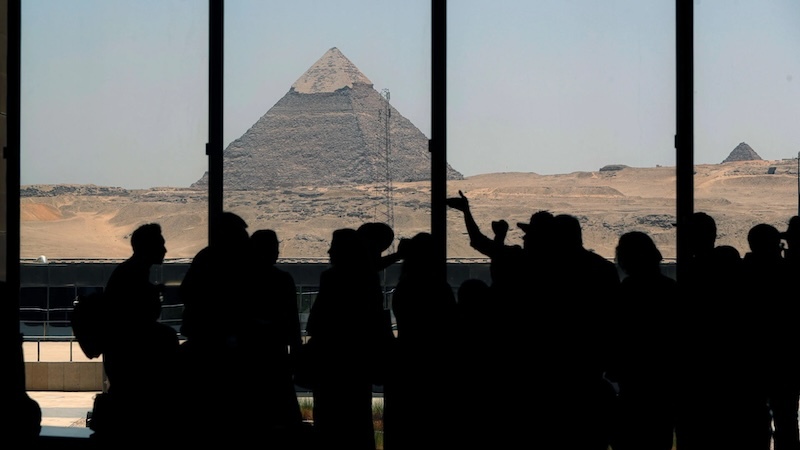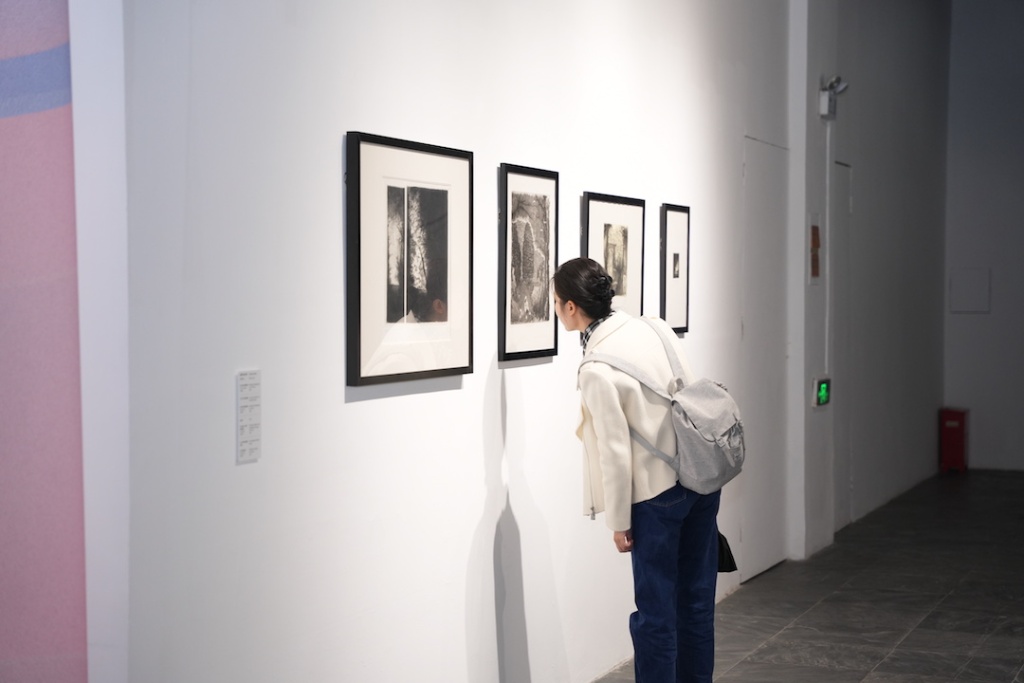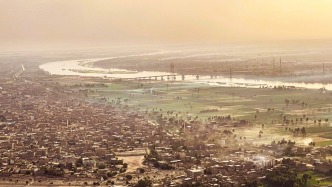
In 2025, the Egyptian Museum in Turin, Italy (Museo Egizio) will celebrate its 200th anniversary. As the oldest Egyptian museum in the world, the museum has witnessed the rise of Egyptology and has become a witness to the cultural heritage of the Savoy Dynasty. Today, with the expansion and renovation of the museum, it is not only a tribute to the past history, but also a sign of the continued development of the research and display of ancient Egyptian heritage in the future.
At the same time, the full opening of the Grand Egyptian Museum in Cairo and the continued popularity of the "Egypt Exhibition" at the Shanghai Museum indicate that the world's attention to and exploration of ancient Egyptian culture has deepened, and the dissemination of ancient Egyptian cultural relics around the world has entered a new era. This article goes back 200 years to look at the history of the establishment of the oldest Egyptian museum.

Exterior view of the Egyptian Museum in Turin
On Christmas Eve 1824, an Egyptian pharaoh wrote to Carlo Felice (1765-1831), Duke of Savoy and King of Sardinia. The pharaoh, who called himself "Ozymandias," was unhappy with his treatment in Turin, Italy, where he had been left in a yard for months wrapped up to his neck in prickly straw. He and his companions (who numbered in the thousands) had made the long, monotonous journey from Luxor. First stored in the port of Livorno for more than three years, then reloaded on a ship bound for Genoa, then transported across the Ligurian hills in horse-drawn gun carriages, they finally arrived in the Savoy capital, trapped in straw, put into boxes or disassembled in glass boxes. He complained that he was bored and uncomfortable, and that his companions were unhappy. Was this how a king three thousand years ago was treated?
Ozymandias is a five-meter-high sandstone statue of Seti II, ruler of Egypt’s 19th Dynasty, and the author of the tongue-in-cheek petition is almost as prominent: Jean-François Champollion, who rose to European fame in 1822 for his deciphering of hieroglyphics. Both men had come to Turin for the same reason: to found a new museum dedicated to ancient Egyptian artifacts.

This quartzite statue, which depicts Seti II (1202-1198 BC), was brought to Italy from Luxor by Bernardino De Roverti and is now in the Egyptian Museum in Turin.
For much of 2024, the courtyard of Turin’s Museo Egizio was filled with scaffolding rather than straw as the museum prepared for its 200th anniversary. Since reopening in 2015, following a major expansion and renovation by Turin-based architecture firm Isolarchitetti (founded by Aimaro Isola), the museum has become one of Italy’s most popular museums, attracting more than a million visitors in 2023. Under a 30-year agreement with the state, the museum operates as a private foundation, giving it more freedom than purely state-run institutions, particularly in terms of recruitment and fundraising.
To celebrate its 200th anniversary, the museum foundation has launched an ambitious engineering program, due to be completed in 2025. The foundation commissioned the Rotterdam-based Office for Metropolitan Architecture (OMA, founded in 1975 by Dutch architect Rem Koolhaas and others) to add a glass roof to the museum's 17th-century courtyard and to build a new set of exhibition rooms underground. These new spaces include a new ticket hall and shop, as well as an immersive exhibition hall for digital presentations, which will feature a specially produced Nile film designed to take viewers into an ancient landscape. When conceiving the immersive exhibition hall, the Metropolitan Architecture used scenes from Edwin Long's The Feast in Egypt (1877) for visualization to present an oriental fantasy of "eternal" Egypt.

Effect picture after renovation
Scheduled for completion in 2025, the glass-roofed courtyard – renamed Piazza Egizia – will be open to the public free of charge outside museum opening hours. It will also include the Ellesiya rock-cut temple, originally located near the site of Qasr Ibrim, built during the reign of Thutmose III, the 18th Dynasty pharaoh of ancient Egypt. The temple is dedicated to the gods Amun, Horus and Satit, which was gifted to Italy by Egypt and moved to the Egyptian Museum in Turin in the 1960s as part of UNESCO’s international campaign to save Nubian monuments in order to prevent the temple from being flooded by Lake Nasser after the water level rose due to dam construction. A new exhibition hall has also been built on the ground floor of the museum, using open storage (such as mountains of ceramic vases) to interpret ancient materials and techniques, and redesigning the exhibition space where Seti II and his stone sculpture companions are located. The Statuario (dedicated to large-scale sculptures from the New Kingdom of Egypt) has become an important exhibition space of the museum since its installation in November 1824 by the museum's first director, Giulio Cordero di San Quintino.

Mark Nicolosino's 1832 depiction of the Hall of Statues in the Egyptian Museum in Turin.
The citizens of Turin are very proud of their Egyptian Museum, the largest in the world after Cairo. Museums devoted entirely to Egyptian antiquities are extremely rare. Outside Egypt, the most important collections are mostly in encyclopedic museums that consider ancient Egyptian culture either a precursor to Western art (such as the Louvre, the Metropolitan Museum of Art) or too important to ignore (such as the British Museum). On the Italian peninsula, however, ancient Egyptian culture has found a second home since Roman times, from obelisks brought back by victorious emperors to the sibyls of Egyptian religion (places where groups of priests lived for a long time, performed religious rituals and managed temple affairs) to Egyptian-style trends in art, gardens and interior decoration. As a result, Italy has several Egyptian collections, some of which are named museums (such as the old Egyptian Museum in Florence and the Egyptian Pavilion in the Vatican today). The Italian language even coined a specific adjective, "egizio", to distinguish ancient Egypt from modern Egypt (egiziano).
With some 40,000 items, the Egyptian Museum of Turin is undoubtedly the largest museum of its kind in Italy. It competed with collectors in Berlin, Leiden, London and Paris for Egyptian antiquities during and after the Napoleonic Wars. The initial collection included statues such as the "Ozymandias", while subsequent archaeological excavations have added artifacts of archaeological value. The rich displays of the Egyptian Museum of Turin are as visually appealing as the collections, and the building in which it is housed is splendid. Housed in a brick Baroque palace in the historic center, the museum shares space with the Academy of Sciences, and its location is inextricably linked to the history of Turin and its one-time rulers, the House of Savoy.
Although Western interest in ancient Egypt is often attributed to Napoleon’s invasion of Egypt in 1798, European powers were already familiar with the country’s illustrious past and its future potential, including mineral wealth and a potential route to the Red Sea. The Savoy court and Turin academic community were no exception, with interests in collecting antiquities, studying the natural world, and exploring economic possibilities intertwined. To this end, Carlo Emanuele III (1701-1773, King of the House of Savoy, who ruled the Kingdom of Sardinia from 1730 to 1773) funded the voyage of Vitaliano Donati, professor of botany at the University of Turin. In 1759, Donati set out on his voyage, planning to travel through Egypt, Nubia, Sinai, Palestine, and Syria, reach India by land, and then circumnavigate Africa by sea, returning to Nice (which was Savoy territory until 1860) via Gibraltar. However, this ambitious journey was interrupted by Donati’s death in Mangaluru in 1762. The box of Egyptian antiquities he left in Alexandria was transported to Turin after his death, and his logbooks and maps were sent back through missionary channels several years later.
The first great Egyptian works to arrive in Turin included granodiorite statues of Isis and the lion-headed goddess Sekhmet, and a red granite statue of Ramses II. These, along with a few other objects loaned by the royal family, such as an altar to the goddess Isis, were installed in the university museum. However, during Napoleon's occupation of Turin, the statues and altar were taken to Paris and not returned until 1818.

Granite statue of Ramses II (reigned 1279–1213 BC), brought to Italy from Luxor by Drovetti and now in the Egyptian Museum, Turin.
Napoleon's expedition to Egypt from 1798 to 1801 sparked a new interest in the history of the ancient country, but also led to the loss of a large number of cultural relics. After the British defeated the French, they shipped the spoils (including the Rosetta Stone) to London, but allowed the French army and scholars to keep their notes, maps and drawings. The Ottoman Empire was also a victorious power, and when the Albanian Muhammad Ali established himself as the governor (Wali) of Egypt, he adopted some of the ideas and personnel left by Napoleon.
One of these was Bernardino Drovetti, the son of a clerk at the Savoy court who, after completing a law degree in Turin during the Napoleonic occupation, joined the French army almost immediately, much to his father’s dismay. Drovetti demonstrated military talent, diplomatic acumen, and a keen nose for opportunity. In 1802, Napoleon personally assigned Drovetti to represent French interests at the court of Muhammad Ali. After Napoleon’s fall, he remained in office as French consul in Egypt during the Bourbon Restoration. Drovetti proved integral to the agricultural, engineering, and industrial projects designed by Muhammad Ali to maximize revenue from his domain; they were said to have become close friends. Drovetti also used European investment and expertise, enriching himself in the process. With Valli’s support, he built up the largest collection of Egyptian antiquities of the time. De Roveti’s agents included the sculptor Jean-Jacques Rifaud (whose name is inscribed on many of Turin’s sphinxes and statues), the mineralogist Frédéric Cailliaud, and another Piedmontese, Antonio Lebolo. Their expeditions reached as far as Nubia, but the tombs and temples of Luxor were their most fruitful hunting grounds.

An 1819 lithograph showing Bernardino de Rovetti (Arms Outstretched) surrounded by a group of Egyptians and Europeans measuring the head of a colossal statue with a plumb line. The image is in the British Museum, London.
The collection was not for Drovetti’s personal enjoyment but for sale – to market it to the city he had left 25 years earlier. Drovetti had begun negotiations with the rulers of Savoy as early as 1820. In 1821, Carlo Felice succeeded his brother Vittorio Emanuele I (who had been forced to abdicate by the Liberal Revolution) and respected the agreed price of 400,000 lire over the protests of the Treasury. New research in the Egyptian Museum archives shows that until late in the negotiations, no one knew exactly what they were buying, and when the boxes were opened, some of the objects did not correspond to the list; Drovetti may have hidden some objects to sell to France. However, the objects stored in the port of Livorno did not disappoint Cordero di San Quintino, the museum’s first director. He arranged the exhibition so expertly that he wrote in a letter later that year that even the French would want to come and see it.
One Frenchman in particular did come: Champollion. He had complimented De Roverti in a letter that “the road to Memphis and Thebes passes through Turin”. Champollion was warmly received by the Academy of Sciences – which was responsible for the collection – and was highly respected by society. He spent months intensively studying the collection, especially the many papyri that were still rolled up. However, not all artifacts were so lucky. One of the most important texts for Egyptian history – the Turin King List – was in pieces when Champollion opened it. Yet he still recognized that the text recorded the rulers of Egypt and the number of years they reigned from the Age of the Gods to before the New Kingdom.
Champollion was not impressed by the first director, Cordero di San Quintino, and the two clashed over access to the collection. The sarcastic "Ozymandias" petition was directed at the Italian director's progress in cataloguing the collection and preparing for the first exhibition, which was indeed an extremely difficult task. However, when the museum officially opened to the public, it was a success. In 1832, the museum was separated from the management of the Academy and became the Royal Museum of Antiquities and Egypt. The Donati Collection (a group of antiquities collected by Italian scholar Giuseppe Donati, mainly including ancient Egyptian artifacts such as stelae, coffins, statues and papyrus documents, etc.) was subsequently integrated into the ground floor and first floor exhibition halls of the museum.
An ink pastel from around the same period depicts the room: coffins, stelae, mounted papyri and royal statues are arranged neatly under a vaulted ceiling, with sunlight streaming in through a tall window on one side. A man in a top hat and tails strokes a vivid sphinx, while a female visitor holding a guidebook and her male companion point to the center of the room. There is one of the museum's most famous statues, a dark stone seated figure of Ramses II in an elaborately pleated robe (from Luxor, part of the Droverti collection). Champollion described it as the "Apollo Belvedere" of Egyptian art and said he was fascinated by it.

Granite statue of Ramses II (1279–1213 BC) in the Statuary Hall
When Carlo Felice insisted on buying the Drovetti collection, it is unclear whether he was aware of the House of Savoy’s earlier interest in Egypt. The Dukes of Savoy moved their capital from Chambery in present-day France to Turin in the 16th century. To mark this event, and to cater to the dynastic ambitions, the court historian Filiberto Pingone published a history of Turin in 1577. He attributed the founding of Turin to an Egyptian prince named Elidano, who was said to have fallen into the Po River (the longest river in Italy) while driving his chariot, and thus associated it with the Nile.
In ancient times, Turin was a Roman military camp, and the discovery of a statue base with an inscription of the goddess Isis gave credence to Pingone’s legend. In 1679, the historian Emanuele Tesauro repeated the story in his History of the City of Turin. By then, Carlo Emanuele I (1562–1630) had set up a gallery in the palace to display the Savoy collection of Greek and Roman antiquities, many of which were found in Turin and the surrounding area. He also acquired the Mensa Isiaca, a stunning bronze altar inlaid with silver, copper, and stained alloys. Dating back to the Roman Empire, the altar was originally discovered in Rome and first belonged to the collection of Cardinal Bembo, then to the Duke of Mantua Gonzaga, before finally being purchased by Carlo Emanuele I.
In 1832, the Isis Altarpiece was incorporated into the Egyptian Museum of Turin, along with the Drovetti and Donati collections, when the museum received the official title of Royal Museum. From that time on, the museum’s fate was closely linked to the history of Turin and the House of Savoy.
In 1861, Vittorio Emanuele II became the first king of unified Italy. Although Turin lost its status as the capital of Italy in 1864 (the capital was first moved to Florence and then to Rome), it still maintained its important cultural and industrial center. At the same time, Egyptology gradually took shape as a new discipline, benefiting from the connection between Europe and Egypt under Ottoman rule established by De Roverti and others.
By the time the Suez Canal opened in 1869, Italians had become Egypt’s second-largest foreign ethnic group, after the French. This immigration continued for decades, fueled by economic opportunities in Alexandria, Cairo, and the canal region. However, prosperity was followed by economic decline. In 1882, Britain invaded and occupied Egypt to suppress a rebellion against the Ottoman governor and to ensure that Egypt could repay its European debts.
Austerity policies imposed by Britain prompted the French-run Egyptian Antiquities Service to introduce a system of archaeology known as “partage” to encourage foreign-funded excavations, under which foreign institutions could keep about half of the finds, thus facilitating the expansion of Egyptian collections in European museums.
In Turin, the new director of the Egyptian Museum, Ernesto Schiaparelli, was well aware of these archaeological developments. He had studied for his doctorate in Paris under Gaston Maspero, who in 1881 became head of the Egyptian Antiquities Service.
Born into a family of scholars in Piedmont, Schiaparelli, whose cousin was the famous fashion designer Elsa Schiaparelli, was not only devoted to Egyptology, but also actively involved in philanthropy, supporting Italian missionaries and emigrants abroad.
With Maspero's approval and the support of King Vittorio Emanuele III of Italy, Schiaparelli established the Italian Archaeological Expedition at the Turin Museum, which carried out a series of excavations between 1903 and 1920, quadrupling the size of the collection and significantly enhancing the Egyptian Museum's international reputation.
Today, the exhibitions, research and historical narratives of the Egyptian Museum in Turin focus on the results of these archaeological excavations, presenting a richness that was unimaginable to scholars in Champollion's time.
At the Egyptian sites of Gebelein and Asyut, Italian archaeologists have discovered unprecedented tombs that date back to the transitional period between the Old and Middle Dynastic dynasties.
In the New Kingdom village of Deir el-Medina, a community of artisans who decorated the pharaohs’ tombs, the Turin Museum has acquired the complete tomb of the architect Kha and his wife Merit. The find includes ornate furniture, textiles, personal items, and their intact shrouds and embalmed mummies.
For some reason, Schiaparelli did not officially publish this major archaeological discovery of 1906 until 1927. This may have something to do with the public attention brought about by the sensational reports of Tutankhamun's tomb in the 1920s.

Box with a decorative offering scene for Ha-Merit, containing a loincloth and other linen fabrics, New Kingdom Egypt (1425-1353 BC), Egyptian Museum, Turin
At that time, Italy had fallen under the influence of fascism, and this historical shadow also shrouded the Turin Egyptian Museum.
From 1913 to the 1930s, the museum's archaeological excavations involved Giovanni Marro, a professor of anthropology at the University of Turin, and were influenced by the scientific racism of the time. Marro founded the Museum of Anthropology and Ethnology at the University of Turin, collected thousands of skeletal remains from all over Egypt, and took a large number of photographs of Egyptian men and boys in line with the research methods used to classify ethnic "types" at the time. He was a fervent admirer of Hitler and Mussolini. However, colonialism and the fascist era remain sensitive topics in Italian public discourse and cultural institutions today.
In a new statue hall designed by the Office for Metropolitan Architecture and a curatorial team, the Egyptian Museum of Turin has taken a small step towards resisting Western Egyptology’s erasure of modern Egyptians. New works by Sara Sallam, an Egyptian artist working in the Netherlands, form part of the exhibition.
The museum’s “Gallery of Kings” has also been redesigned, abandoning the ornate mirrored decorations installed by film designer Dante Ferretti in 2006 (which attracted Instagram users but not archaeologists), and adding classical Arabic signs, which also symbolizes the recognition of Egyptian cultural origins and responds to the large Arabic immigrant community in Italy.
The slogan for the 200th anniversary of the Egyptian Museum in Turin – “Memory is our future” – does not clearly indicate whose memory it is and whose future it belongs to.
Still, Seti II (“Ozymandias”) would have had no complaints about the latest renovations to this extraordinary museum, and visitors might even be mesmerized, as Champollion did, by the serene visage of Ramses II or the metallic sheen of the altar of Isis—not to mention the Apennine city they now call home.

The new material culture hall of the Egyptian Museum in Turin is filled with pottery.
Note: This article is translated from Apollo Magazine


